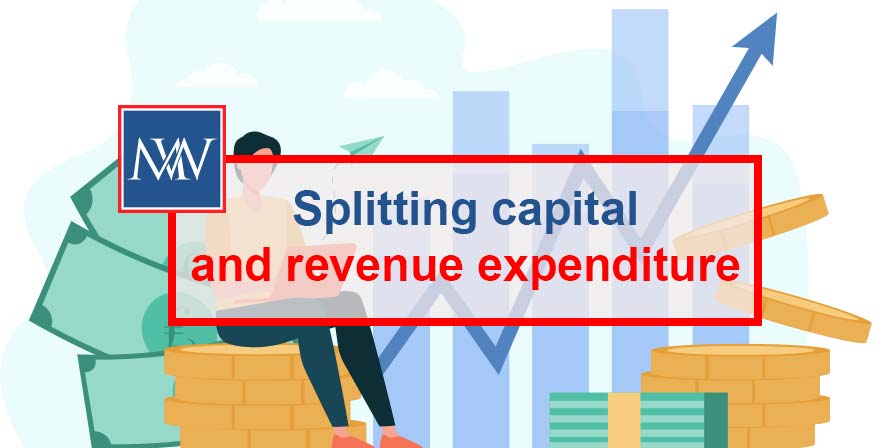
Splitting capital and revenue expenditure
When it comes to tax relief for expenditure, not all expenditure is equal. The relief, if any, that is available, depends on whether the expenditure is capital or revenue, and for capital expenditure on whether the accounts are prepared on the cash basis or the accruals basis.
When doing up a property, it is important to understand whether the expenditure is capital or revenue, and where necessary apportion costs to the correct camp.
Capital and revenue expenditure may be incurred at the same time. Where this is the case, the expenditure will need to be split between the capital component and the revenue component so that each part can be treated correctly for tax purposes. The need to split expenditure is most likely to arise where a property is being renovated or extended. Where this is the case, the project may include elements of repair and maintenance as well as capital improvement.
When undertaking repair and improvement work, the line between capital expenditure and revenue expenditure can become blurred. In renovating a property, repairs may be carried out at the same time. Expenditure on repairs remains allowable, subject to the condition that it is incurred wholly and exclusively for the purposes of the business. To identify the deduction for repairs, the costs must be split. However, where alterations are carried out that are so significant as to amount to the reconstruction of the property, the full amount of the associated expenditure will be capital expenditure. Expenditure will only be allowable as repair expenditure in relation to any parts of the old building that are preserved.
Making the apportionment
If the contractor provides one bill covering both capital and revenue expenditure, the costs will need to be apportioned. To do this, it is necessary to identify what work counts as repair work and what work counts as improvement work. HMRC allows expenditure to be ‘apportioned on a reasonable basis to estimate the amount attributable to the repair element’. Where the bill is itemised, splitting the total between capital and revenue should be fairly straightforward. However, HMRC stress that any split ‘must be done fairly and the figures will be open to review’. To back up the split, it is helpful to keep any relevant documentation, such as evidence of initial discussions and initial estimates, plans and suchlike. For example, emails discussing how part of the building may be repaired may be useful to support the contention that the associated expenditure is deductible revenue expenditure rather than capital improvement expenditure.
For more information, Book a Free Consultation
Need Accountancy Support?
For information on bespoke training, or if you have any other questions for Makesworth Accountant, please fill in your details below
















 151
151